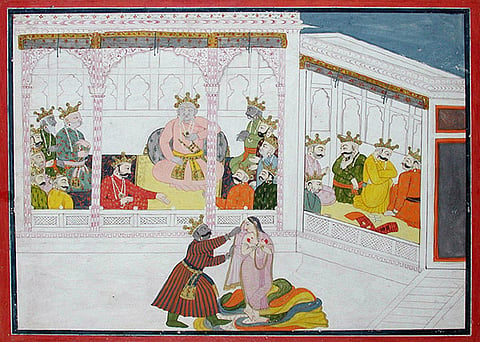Two years ago, I was in Kolkata while the city performed her annual Durga puja. After a dinner party, a group of friends and I left an apartment with a view to visiting the nearby Navadurga temple. We were welcomed by nine supposedly different representations of Durga's various aspects, all exact lookalikes. Standing upright, one next to the other, they resembled a crew of Bollywoodised flight attendants: blindingly white and tawdry mannequins with flagrantly rouged lips stretched into Mona Lisa smiles. It seemed as if Durga had been sublimated beyond recognition – there were no vestiges of her resolute self on any of those uniform, bleached out faces.
The real surprise, however, awaited in the adjacent room. Tucked into a wall niche was a miniature, dark-skinned Kali, decked with tribal beads and wrapped in a piece of colourful cloth the size of a handkerchief. At first, she looked like an ordinary straw doll. The black goddess was so strikingly inconspicuous – a dethroned and exiled splint of darkness. How had she shrunk to such infinitesimal proportions? What had happened to her, and whose company had she been keeping?

